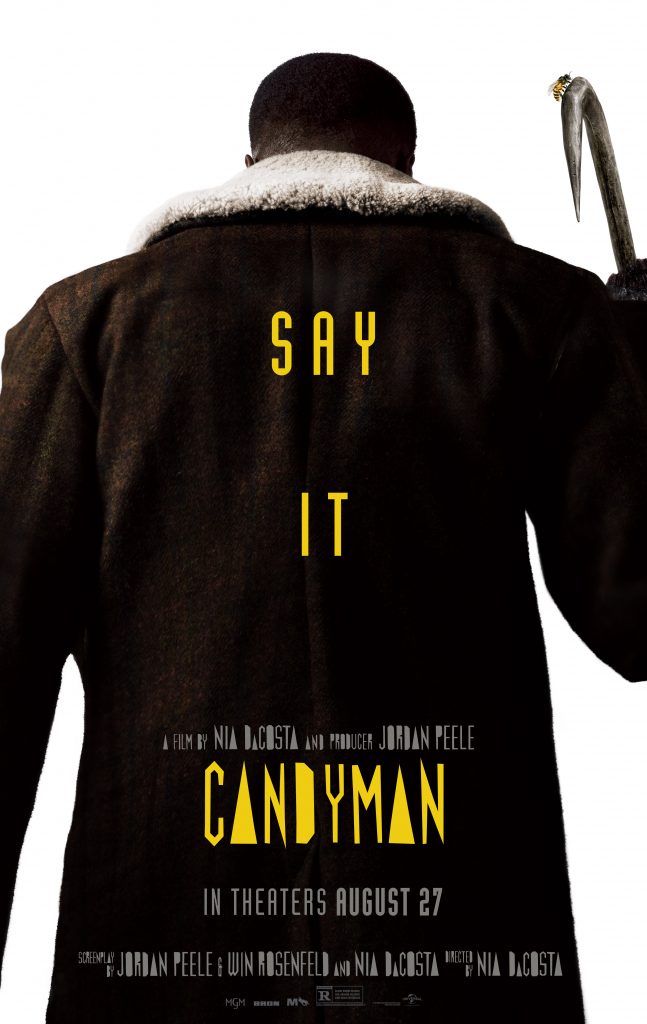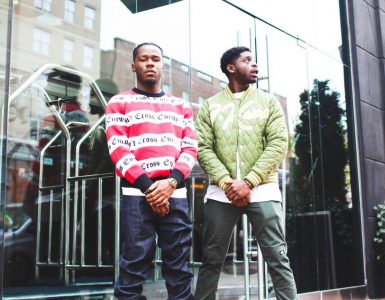
Nia DaCosta’s “Candyman” resurrects the horror icon both on the screen and within the world of the film. The audience follows Anthony McCoy, an artist in search of inspiration, as his research uncovers the horrors of the original 1992 film and the now scorched earth of Cabrini Green.
As McCoy delves into the story of Helen Lyle, the original film’s protagonist, their stories form a reflection as they both begin to spiral too far into the tragedy that is Candyman. However, the mirror image begins to fracture, as both films spotlight differing aspects of Candyman’s sinister myth.
SPOILERS AHEAD
Both the 1992 and 2021 films deal with the complicated history of the Cabrini Green housing project. “Candyman” (1992) follows Lyle as she researches the effects of urban legends on the Cabrini-Green community. In the year the film was released, fear surrounding poor Black communities was persistent due to an increased crime rate. In that year alone, Chicago experienced 934 homicides; 88% were male, and of that 80% were Black.
As described in the film, Cabrini-Green is a place to be feared. During Lyle’s first visit, she is accosted by gang members. During her second, she is attacked by their leader who has adopted the name Candyman to strike fear into the community. Almost everyone avoids Cabrini-Green, even the police.
“Two people get brutally murdered, and the cops do nothing,” Lyle remarks. “A white woman goes in and gets attacked, and they lock the place down.” The outside world has given up on the residents and resigns them to their brutal fate.
“Candyman” (2021) takes a slightly different approach. Cabrini-Green is less of a domineering force of evil; it takes the form of a whisper of screams that still linger in the now demolished buildings. The film takes lengths to show that external forces caused atrocities to happen in Cabrini-Green just as much, if not more, than the residents did. This shows through the character William Burke who starts the film as a boy who witnesses the brutal slaying of a man believed to be putting razor blades in candy.
The horror is not just the substandard living conditions; it’s the trauma of being immersed in it with no escape, even as the years pass on. After the 2020 Black Lives Matter protests, audiences are too familiar with the consequences of over-policed neighborhoods and the vilification that comes with it. There was no boogeyman, and yet after this incident they created one.
The cyclical nature of Candyman is an added aspect to the 2021 film. The original film explains that Candyman was born Daniel Robitaille, the son of a slave who gained favor in high society due to his natural affinity for painting. He is later brutally murdered by a mob after he falls in love with one of his clients and she becomes pregnant. It is later revealed that Candyman is a moniker of suffering; countless other men slaughtered in equally brutal ways become their community’s Candyman. They are the burden of trauma that continues to plague the community.
McCoy, the 2021 film’s protagonist, is not exempt from the plague. Though he lives in the now gentrified area where Cabrini-Green once stood, the sinister nature still persists. As an artist, his work is consumed through the view of how the white community views his pain. The trauma of the Black community feels distant until Candyman steps through the looking glass to prove how real it is. Those who refuse to take his art seriously and summon Candyman are then killed. All the while, the pain of Candyman’s past consumes McCoy, transforming him into the newest iteration of Candyman.
In this way Lyle’s journey reflects the inability to truly understand the suffering she is documenting until it is too late. Several times her research partner, Bernadette Walsh, urges Lyle to leave well enough alone. Lyle persists, summoning Candyman and dooming the Cabrini-Green community to relive its traumatic past.
Due to Lyle’s actions, Cabrini-Green resident Anne-Marie McCoy’s baby is stolen, and Walsh is murdered. Lyle is arrested for both crimes. In her absence a child orchestrates a trash fire hoping to kill Candyman, not knowing Candyman placed the stolen baby at its center. Though Lyle is able to save the baby from Candyman’s trap, she has to sacrifice herself to undo the pain she has caused and banish Candyman forever.
However, it is revealed that she was not successful. Despite a pact the Cabrini-Green community made to never speak his name again, Anthony McCoy is still able to find his way back. It is revealed that McCoy was the baby saved from that fire. His mother tried to hide his past from him, but it still came to light after a grown William Burke first introduced McCoy to the myth, starting his downward spiral.
Burke harbors pain and guilt for unintentionally causing the death of the man accused of harming the neighborhood children. This guilt gives way to resentment as Candyman’s victims are confined to the Black community because they are the only ones who know the myth. He uses McCoy to continue the cycle, to start a new chapter where Candyman seeks retribution against the outside forces that doomed the Cabrini-Green community.
And with this point, the two films split on the biggest question: Who is Candyman? In the 1992 film he is the boogeyman, an entity born of fear and pain who seeks to disperse that pain onto others, a dark spot that must be avoided at all costs. However, in the 2021 film he is the embodiment of years and decades of suffering at the hands of outside forces that continue to entrap the Black community. In the end, he is a reflection of the horrors that society has perpetuated over and over again throughout years and decades of racial violence.
“Candyman” (2021) reclaims his name and myth, taking the suffering that is ignored and daring everyone to say his name.
Chanel Cain covers television and film for 101Magazine.net.










Recent Comments